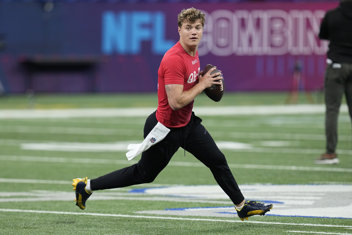Underclassmen declaring early down 20 percent
As of the Jan.15, 2015, deadline, 86 underclassmen declared their intention to enter the 2015 NFL draft, down 20 percent from the 107 who participated last year.
An even steeper drop — 30 percent — came in the number of underclassmen who received an official NFL evaluation before deciding whether to enter the draft: 149 in the fall of 2014, compared with 214 a year earlier.
“While some like to debate the advantages of declaring early for the draft, one thing is for certain: Completing your education affords you more opportunity and financial freedom beyond football,” said Troy Vincent, the NFL’s executive vice president of football operations.
The decline in both evaluations and draft entrants resulted from changes in the NFL College Advisory Committee’s process for determining whether underclassmen are ready for the pro game. Under NFL guidelines issued in the summer of 2014, a college can request evaluations for only five players, with exceptions determined on a case-by-case basis; previously, there was no limit on the number of players from one team who could be reviewed.
The ratings system was revised as well. In previous years, the committee — made up of NFL scouts — would put players in one of five categories: potential first-round pick, potential second-round pick, potential third-round pick, no potential for the first three rounds or no draft potential at all. The new ratings are much simpler: potential first round, potential second round or neither (meaning “stay in school”).
Of the 149 underclassmen evaluated for the 2015 draft, 123 (83 percent) were advised to remain in school. Still, 33 of them declared for the draft.
The NFL encourages the majority of underclassmen to finish their college eligibility and earn their degree while maturing as a professional prospect. Participating in the draft means that an underclassman loses his remaining eligibility — so if he’s not drafted, he won’t be able to play another college season to try to improve his standing the following year.
“Declaring for the draft doesn’t guarantee success in the NFL,” Vincent said. “This honest assessment informs the student-athlete, in very realistic terms, of his likelihood of being drafted in the first two rounds — or recommending that he should not forfeit his remaining college eligibility, and complete his education while improving his football skills and maturity.”
Learn more about the College Advisory Committee and getting into the NFL.


